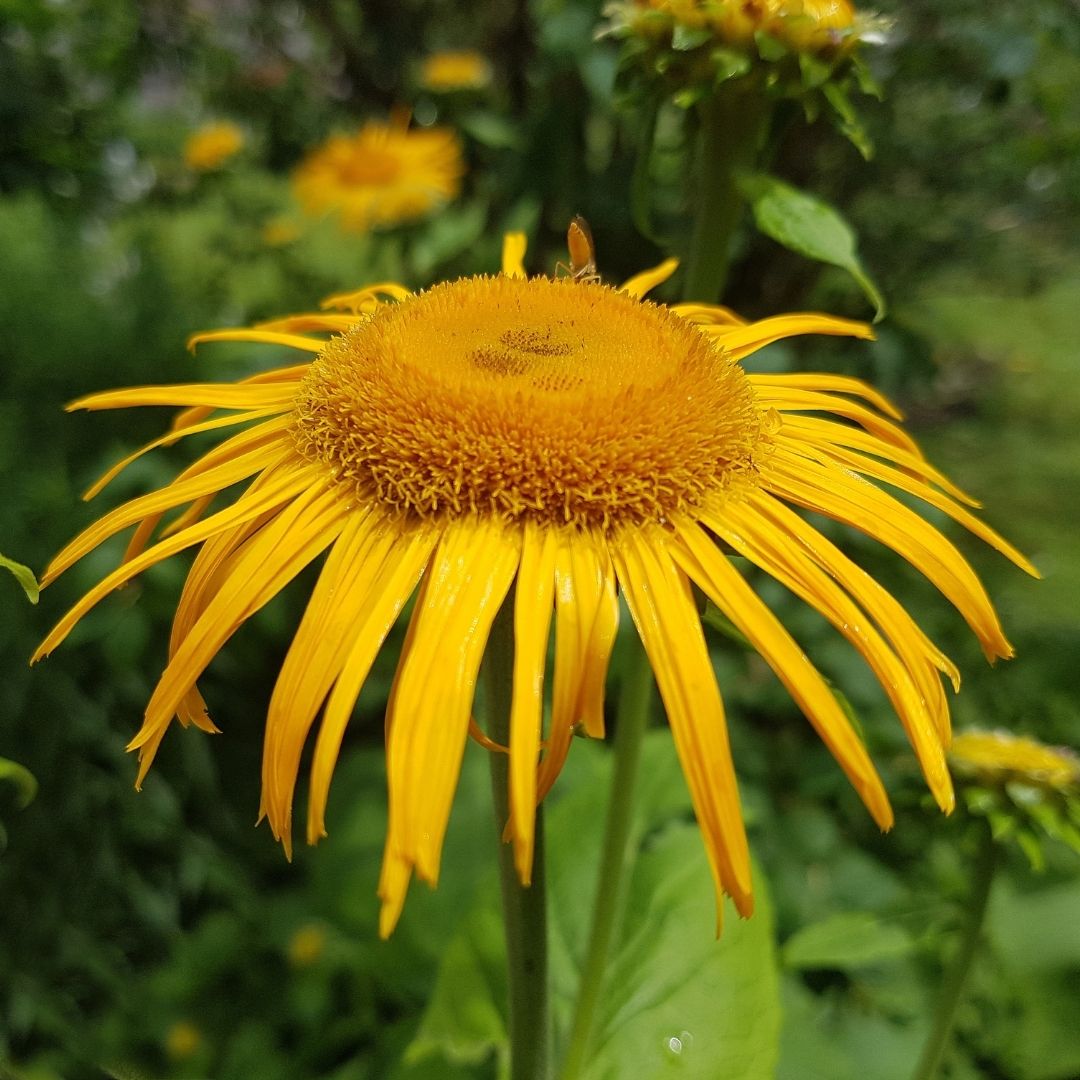By Dr. Peter Klapper Ph.D.
What is it?
Inula helenium, also known as elecampane, is a soothing herb with a long list of potential health benefits. It’s a sunflower-like plant from the daisy family that is native to Europe and northern Asia. Its roots and rhizomes are rich in flavonoids, polysaccharides, fatty acids, and other healthful compounds.
What is its history?
This herb is the stuff that legends are made of…literally. Folklore suggests that Helen of Troy wore this flower in her hair as she was abducted from her homeland and that this plant grew wherever Helen's tears fell during this time. Its genus name, Helenium, refers to Helen of Troy.
How is it used?
The list of potential health benefits associated with the roots and rhizomes of Inula helenium is a lengthy one. It has been used to treat coughing associated with bronchitis, asthma, and even whooping cough.
How is it taken?
Inula helenium is available in teas, tinctures, medicinal honey, syrup, capsules, extracts, or drops such as in Forces of Nature’s Allergy Maximum Strength. Health benefits aside, the root is also used to give absinthe its bitter flavor.
How does it work?
It’s rich in mucilage which helps thin the mucus that can trigger coughing. (Sometimes mucus is produced in response to irritation from an allergen.) A study in the journal Antioxidants showed that elecampane has anti-inflammatory effects in the lungs, which can also help ease coughing and congestion. This herb is also rich in the prebiotic soluble fiber inulin. Prebiotics help to encourage a healthy and well-balanced gut. Inulin has other positive effects too. It can slow metabolism and reduce blood sugar spikes in people with diabetes.
Thinking of giving elecampane a try?
Forces of Nature’s Allergy Maximum Strength contains Inula helenium along with other all-natural herbs such as stinging nettle, marshmallow, and Scots pines to reduce vexing allergy symptoms. Place 5 to 10 drops under your tongue at first signs of sniffling, sneezing, cough or other allergy symptoms. Repeat this every 15 minutes until symptoms subside. You can also add three to six drops in water and drink throughout the day.
Where can I learn more?
Interested in learning more about Inula helenium? Check out these articles:
What is it?
Inula helenium, also known as elecampane, is a soothing herb with a long list of potential health benefits. It’s a sunflower-like plant from the daisy family that is native to Europe and northern Asia. Its roots and rhizomes are rich in flavonoids, polysaccharides, fatty acids, and other healthful compounds.
What is its history?
This herb is the stuff that legends are made of…literally. Folklore suggests that Helen of Troy wore this flower in her hair as she was abducted from her homeland and that this plant grew wherever Helen's tears fell during this time. Its genus name, Helenium, refers to Helen of Troy.
How is it used?
The list of potential health benefits associated with the roots and rhizomes of Inula helenium is a lengthy one. It has been used to treat coughing associated with bronchitis, asthma, and even whooping cough.
How is it taken?
Inula helenium is available in teas, tinctures, medicinal honey, syrup, capsules, extracts, or drops such as in Forces of Nature’s Allergy Maximum Strength. Health benefits aside, the root is also used to give absinthe its bitter flavor.
How does it work?
It’s rich in mucilage which helps thin the mucus that can trigger coughing. (Sometimes mucus is produced in response to irritation from an allergen.) A study in the journal Antioxidants showed that elecampane has anti-inflammatory effects in the lungs, which can also help ease coughing and congestion. This herb is also rich in the prebiotic soluble fiber inulin. Prebiotics help to encourage a healthy and well-balanced gut. Inulin has other positive effects too. It can slow metabolism and reduce blood sugar spikes in people with diabetes.
Thinking of giving elecampane a try?
Forces of Nature’s Allergy Maximum Strength contains Inula helenium along with other all-natural herbs such as stinging nettle, marshmallow, and Scots pines to reduce vexing allergy symptoms. Place 5 to 10 drops under your tongue at first signs of sniffling, sneezing, cough or other allergy symptoms. Repeat this every 15 minutes until symptoms subside. You can also add three to six drops in water and drink throughout the day.
Where can I learn more?
Interested in learning more about Inula helenium? Check out these articles:
Eclectic School of Herbal Medicine. Elecampane Monograph. https://www.eclecticschoolofherbalmedicine.com/elecampane-monograph/
Missouri Botanical Garden. Inula helenium. https://www.missouribotanicalgarden.org/PlantFinder/PlantFinderDetails.aspx?taxonid=277211


